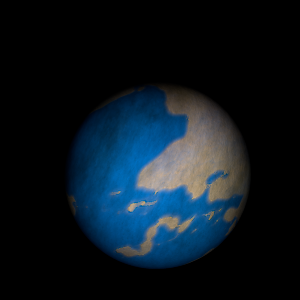|
|
Space Astro
|
Info for exoplanet "Enshweng Kwai"
| Scientific (actual) data |
|---|
| Name | Kepler-1350 b |
| Planet status | Confirmed |
| Radius | 0.225 |
| Orbital period | 4.49686 |
| Discovered | 2016 |
| Updated | 2021-02-05 |
| Tconj | 2454970 |
| Publication | Announced on a website |
| Detection type | Primary Transit |
| Alternate names | 2MASS J19130013+4640465 b, K02793.01, KIC 9823519 b, KOI-2793 b, KOI-2793.01, WISE J191300.14+464046.2 b |
| Star name | Kepler-1350 |
| Right ascension | 288.25° |
| Declination | 46.68° |
| Mag j | 13.989 |
| Mag h | 13.338 |
| Mag k | 13.122 |
| Star distance | 350 |
| Star metallicity | -0.06 |
| Star mass | 0.55 |
| Star radius | 0.53 |
| Star age | 4.57 |
| Star temperature | 3827 |
| Star alternate names | 2MASS J19130013+4640465, KIC 9823519, KOI-2793, WISE J191300.14+464046.2 |
| Wikipedia article | Kepler-1350 b |
Back
| |
| Fictional info (?) |
|---|
| Suggested name | Enshweng Kwai |
| Planet type | Cold planet |
| The volume of water ice in the south polar ice cap, if melted, would be sufficient to cover the entire planetary surface to a depth of 8 meters.
Surface crowded with strange and advanced plants known to feed in the air by seeking the somewhat smaller "Nouh'o". Most Wangkyingm are not related to Yinyao but have fur and vary in size from 60 to 110 cm. Most Wangkyingm can withstand temperatures from -90 to -50°C and even even a limited degree of radiation which is common near the poles. |
| Estimated population | 6000 |
| Atmosphere | Oxygen | 52% |
| Methane | 34% |
| Carbon dioxide | 8.7% |
| Water | 5% |
| Atmospheric pressure | 0.1 bar |
 |
| Moon | Xwabyang | Small round rocky moon |
| Enshyuz Wanshyi | Very small round oceanic moon |
| Lyao | Medium-sized irregular rocky moon |
| Yong Kang | Medium-sized potato shaped rocky moon |
| Waihang Gyankyong | Huge irregular rocky moon |
| Nwei | Large almost round ice planetoid |
| Google search for Enshweng kwai |
|
Website by Joachim Michaelis
|
|
|
|